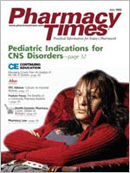Counseling Cholesterol Self-Care
Treating elevated cholesterol was once a relatively simple matter. One would treat total cholesterol levels of >200 mg/dL and/or low-density lipoprotein (LDL)/high-density lipoprotein (HDL) ratios of >4 to 4.5. The Third Report of the National Cholesterol Education Program Expert Panel on Detection, Evaluation, and Treatment of High Cholesterol in Adults (Adult Treatment Panel III [ATP III])1,2 addresses LDL, HDL, and total cholesterol separately (Table 1) and discards the LDL/HDL ratio. It considers gender and age and uses 10-year risk for coronary heart disease (CHD) as specifying criteria (Table 2 and www.guidelines.gov). Electronic 10-year CHD risk calculators are available at www.nhlbi.nih.gov/guidelines/choles terol.
The guidelines also incorporate risk factors, which include the following:
- Cigarette smoking
- Hypertension (blood pressure =140/90 mm Hg or taking antihypertensive medication)
- Low HDL cholesterol (<40 mg/dL)
- Family history of premature CHD (CHD in a male first-degree relative <55 years; CHD in a female first-degree relative <65 years)
- Age (men =45; women =55 years)1
Treatment Strategies and Goals
Cost-effective lifestyle changes related to diet, exercise, and weight are preferred for suitable candidates. Cutoffs for combined therapeutic lifestyle changes and drug therapy are summarized in Table 3. Table 4 lists cholesterol- lowering drug classes.
Counseling
In performing patient-specific counseling, pharmacists should recognize current and emerging risk factors and should aim to improve the patient's motivation.
Educate to Improve Motivation
People will ignore problems they do not fully understand. People may hear about cholesterol management but may not understand why HDL and LDL levels are important. Simple metaphors may improve understanding (see sidebar).
Differentiate Types of Fat
Foods high in fat, cholesterol, and trans fatty acid (TFA) affect cholesterol levels. TFA may be more harmful than saturated fat, but patients are often ignorant of its effects. Pharmacists should counsel patients to read labels carefully.
Review Dietary Guidelines
Fewer than 10% of calories should come from saturated fat, with total fat intake 20% to 35% of all calories. Total cholesterol consumption should be <300 mg/day. TFA should be as low as possible.3 Patients with unhealthy cholesterol levels must consume <7% of calories from saturated fat and <200 mg/day of cholesterol.1 Pharmacists may suggest a consumer pocket guide to simplify tracking.
Review Cholesterol-Free Myths
Cholesterol is found only in foods of animal origin. Food labels boasting "cholesterol-free"contents may mislead patients. Many vegetable-origin foods (eg, palm and coconut oil) are high-fat. Also, many fat-free foods contain hydrogenated oils and other forms of TFA.
Stress Cholesterol-Lowering Foods
Several foods decrease cholesterol absorption and reduce LDL. A total of 5 to 10 g of soluble fiber daily from oatmeal, oat bran, beans, cruciferous vegetables (eg, cabbage, turnips), and fruits decreases LDL by ~5%.4 Daily walnuts and almonds may reduce LDL by 12%, but they have high calorie contents.4 Soy at amounts difficult to achieve in Western diets can reduce LDL. Pharmacists may wish to recommend 2 weekly servings of omega-3 fatty-acid-containing foods, such as salmon and tuna.
Encourage Lifestyle Changes
Regular aerobic exercise increases HDL, improves weight and hypertension control, and reduces diabetes risk.5 Weight loss lowers LDL and reduces metabolic syndrome risk.1 To track food consumption and exercise levels accurately, pharmacists may recommend a daily log. They also should help patients deal with barriers and encourage patients to seek support from significant others.
Set Realistic Goals
Unrealistic goals lead to failure. The dramatic weight loss of fad diets usually is followed by prompt weight gain. A 10% weight loss over 6 months is realistic.6 Sedentary people should begin to exercise 5 or 10 minutes a day, gradually increasing the time to 30 minutes daily.
Get Commitment
People are more likely to achieve goals when they make public commitments and know that others are observing them. Pharmacists should extract commitments by saying, for example, "Tell me how you'll fit in 30 minutes of exercise 3 times a week," or "How will you limit fast-food lunches to once weekly?"
Think "Brief Intervention"
Counseling from health care practitioners has impact. Studies demonstrate, for instance, that sessions on smoking cessation as short as 3 minutes improve outcomes.6 Timing is also important. Patients upset with news of 300 mg/dL total cholesterol might be more receptive later.
Putting It All Together
Achieving cholesterol goals frequently requires changing lifelong habits.
Toward that goal, encouragement and counseling by a pharmacist can have a lasting impact.
Ms. Wick is a senior clinical research pharmacist at the National Cancer Institute, National Institutes of Health, Bethesda, Md. The views expressed are those of the author and not those of any governmental agency.
For a list of references, send a stamped, self-addressed envelope to: References Department, Attn. A. Stahl, Pharmacy Times, 241 Forsgate Drive, Jamesburg, NJ 08831; or send an e-mail request to: astahl@ascendmedia.com.

